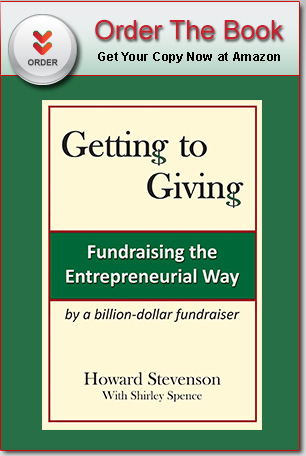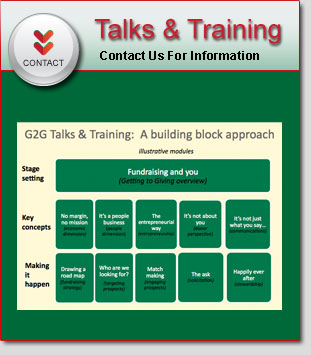Sometimes, nonprofits make the mistake of pursuing funding that they shouldn’t, or not saying “no” to gifts when they should.
One problem is the “inside-out” approach taken by too many nonprofit organizations. They make the institution and its needs the first priority. Next, they try to sell items on their list of needs. The broader purpose of the organization and its work may only come up as an aside, part of the pitch. Or, the organization may have only a fuzzy idea of its core mission, or lack broad agreement on or commitment to it. The better way, I hold, is an “outside-in” approach: Mission, then donors, then the institution.
I will concede that an inside-out approach can work, to a degree. Harvard fundraisers sometimes refer, jokingly, to the core alumni loyal to the school as the “wearers of crimson underwear.” But, it will leave out an untold number of potential donors who might be inspired by your mission. And, it can cause you to veer off-course, perhaps without even realizing it, by accepting funding for projects that are not consistent with your mission. You may end up with a jumble of initiatives, driven by donors’ wishes rather than what you aspire to accomplish. 
Copyright, Grantland Cartoons (www.grantland.net)
Here’s another problem: “the gift that keeps on taking.” A donor funds the establishment of a center at an educational institution, with a plaque bearing his name. Then what? What donor is likely to contribute the money necessary to sustain it, in the future? Or someone generously pays for the construction of a new recreation center…but not its operating costs. The local community gets stuck with the bill.
A third problem is “the hidden agenda donation.” Sometimes a donor is not interested so much in your cause, as in being affiliated with your institution, for their own benefit. This is particularly true for brand-name institutions. One HBS development officer recalled a family in India who had been trying for years to make a million dollar donation. The problem was that they were in a for-profit business, and wanted to be able to say they were connected with Harvard. Their offer was gracefully declined.
Finally – and this may sound odd, at first – you can overdo it. Sometimes, enough is enough. HBS launched an initiative to raise $1.8 million for a new Indian Research Center. Once the goal had been met, fundraising efforts ceased, even though it was felt there was additional capacity. Donors found that reassuring; they weren’t being “milked.” And, some years later, they were willing to participate in another fundraising effort. HBS also will not accept funding for professorships if there are no faculty positions available. It’s partly a matter of integrity, and partly a matter of not wanting to disappoint the donor.
One development officer fervently believed, and I would agree, that how you get the money is as important as the money itself. I find that prospects and donors appreciate honesty, and sometimes, a little comic relief. Here’s how it went at one fundraising dinner. I introduced myself as being in the business of “picking pockets and rolling drunks,” and continued with: “We’re here to raise money. There are no pledge cards under your plate, the doors are not locked, and we won’t ask you to bid on anything. But I hope that by the end of the evening, you will be as excited about the opportunity I’m about to describe as I am.”
Another thing to bear in mind is that donors can offer more than money. They have the potential for “the three T’s: time, talent, and treasure.” You need to think strategically about all three elements: what do you need, and where can you get it? Then you need to think strategically, about what you want from each donor. Does he have the time and skills to contribute to the board? Does he know people who might be prospects? Is he himself a potential donor? Can he help organize fundraising events? Be creative and flexible. Maybe someone isn’t in a position, right now, to make a big gift himself, but can help raise the money.
At the end of the day, raising money is indeed the purpose of fundraising. But, it should be more than a transaction. It needs two parties to feel really good about the gift: the donor and the recipient. Done properly, the donor will not only feel good about the gift and its impact, but also will feel increased confidence in and commitment to the institution. On the recipient’s side, the institution will feel grateful for the gift, and excited about the opportunity to advance its mission.



